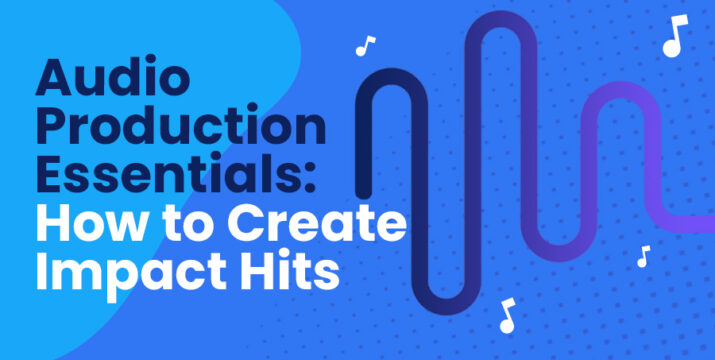Audio Production Essentials: How to Create Impact Hits
By SourceAudio | Updated June 18, 2021

Impact hits are one of the most widely used and in-demand sound design elements on the market. There are endless variants for audio engineers to explore on this production staple, and once you understand the basics of how this sound is made, you can create your own cinematic hits quickly and easily.
Layer Sounds to Create a Full Range of Frequencies and a Natural Sounding Attack
To get started creating a hit, you’ll want to layer various sounds, each one bringing an interesting sonic characteristic, and occupying a unique frequency range. For instance, sub-bass to occupy the bottom end, a low range kick, another kick with a high pass filter to occupy the mid-range, and other high-passed samples or signals to occupy the upper mids and high end.
Get creative with your samples if you see potential in a sound. Pitch shifting or reversing a sound will give you something brand new.
Listen closely and fine tune the timing of each sound’s attack so that they all fit together naturally. Instead of each sound hitting all at the exact same time, the sounds should come together to hit in a way that sounds organic, which will require some slight staggering to flam their attacks.
To create a natural sounding decay, some effects should sustain longer than others, and selecting which ones should ring out or die off can create radically different sounds.
Pitch envelopes or other types of processing automation on a track can bring tons of movement and character to a hit as well.
Finally, mix your levels on your tracks, and you’re ready for the final phases of processing.
Add Reverb and Delay
With the EQing finished on each track, all that’s left to add onto your impact hit is reverb and delay.
A good plate reverb can be an excellent choice for an impact hit, but ultimately there are no rules to selecting the specific reverb(s) that you apply to your hit, how wet or dry the signal is, or how much room you’d like to add to your sound.
An important attribute to consider when selecting a reverb is to ensure that it carries your low frequencies. Many reverbs leave out the low frequencies so that tracks don’t become muddy, but when dealing with a single hit like this, you’ll want the option to keep the lower body of the hit intact as the reverberation decays. One good option for your reverb is Convolution Reverb Pro from Max for Ableton Live, which will ensure sufficient rumble for your hit.
Finally, apply delay as liberally as you’d like. Layer different delays, or keep your hit on the short side. This last step is one of the most expressive, and requires the least amount of skill.
That’s it! Keep building hits and experiment with the vast possibilities available for designing this sound design staple.

Self-Serve AI Metadata Tagging is Here, and Your First 20 Songs are Free!
Unleash the Power of AI Tagging Inside Your SourceAudio Admin Panel Our new AI tagging delivers unmatched quality, value, and performance. And, when you tag a song with our AI, all future upgrades and updates flow your way automatic...[ READ MORE ]

Trends, Highlights, & Insights from 2023! Plus, a look ahead at 2024...
From our dedicated team to you and yours, we wish you all the best in this New Year and want you to know we are more energized than ever to deliver on our mission and roadmap to help you grow in 2024 and beyond!...[ READ MORE ]






